July 20, 2017, by Sarah Colborne
Portland Building: from the archives
Staff from Manuscripts and Special Collections look back on the original opening of the Portland Building and the reactions recorded at the time in the University archive and printed collections.
Whilst browsing through issues of The Gong (the University magazine, which was founded in 1895 and ran until the 1970s), we chanced upon these drawings of building work in progress at the Portland Building in 1956. These look very familiar to those of us who have used the building recently. It got us thinking about what students in the late 1950s made of their new building, so we’ve had a look through the published histories and archives, and have uncovered a story of a vision for a shared space that caused quite a row at the time.
Sketches of workmen completing the Portland Building by Dave Pigott, published in The Gong, December 1956, University of Nottingham Collection Periodicals
In a time when British universities were looking west for inspiration, Vice-Chancellor Bertrand Hallward came back from a tour of American campus universities wanting to provide a place where students could eat, study, debate, and buy books, all under one roof. The Portland Building was intended from the outset to be “not a students’ union building, it is a building built for the whole university of which the students’ union is a very important part”. (Campus critique: the architecture of the University of Nottingham).
Audio recording of part of the speech made by Vice-Chancellor Bertrand Hallward at the opening of the Portland Building in 1956.
In his research for his recent published book (Nottingham: a history of Britain’s global university), Professor Beckett discovered that this did not go down well with the Union who felt that their needs were not sufficiently considered in the design. This led to heated rows between the Union and the University administration, with staff storming out of a joint committee meeting. As the opening ceremony approached, the administration were very nervous about the idea of allowing the President of the Union to make a speech.
Audio recording of part of the speech made by Clive Priestley, President of the Students Union at the opening of the Portland Building in 1956.
In the end, the student newspaper The Gongster (9 Nov. 1956, p. 3), reports that the newly appointed President, Clive Priestley, drew a line under the dispute with the Union office of the last session, describing them as “the home of incipient revolution and talk of blowing the folks above us even further upstairs than they were at present”.
On the day, he used his speech to affirm the idea of it being a communal space for staff and students to intermingle, saying “I hope that the Portland Building is not going to be just a cosy ivory tower”.
The building was particularly welcomed because it afforded those living in private accommodation off campus, with the space and facilities to enjoy the full university experience (the communal spaces for socialising and studying), which up until then had only been provided by Halls of Residence.
But it was not just the function of the building that caused contention. The architecture itself was the source of some disquiet. According to Fawcett, the chosen architect T.C. Howitt, who designed the Council House and Raleigh Cycles’ headquarters (now the Marcus Garvey Centre), was known for his overt traditionalism. This choice was criticised by the new generation of post-war modernist architects, and due to various delays, by the time the building was opened in 1956, the design was almost a decade old.
However, the commissioning of committed modernist, Sir Hugh Casson and associate H.T. Cadbury-Brown to design the interiors, helped to compensate for the staid exterior, receiving critical acclaim (The Architect’s Journal described it as “fresh, colourful and inspiring”, according to Fawcett).
Author B.S. Johnson in his book The Unfortunates, gives us his impression of the newly finished Portland Building as a visitor to the University. In this experimental autobiographical novel (a ‘book in a box’ in which the chapters are unbound and can be read in any order), he reflects on his friendship with Tony Tilinghast, an Editor of The Gong magazine — a friendship which began with this visit.
“But this Union was a new building, just, having unnecessarily wide corridors, perhaps, enormous rooms for relaxation, spongy new armchairs, all the contemporary furnishings, such that we, as students from London, from the discomforts of ad hoc misplanning at our own college, felt out of place, very, awkward even, so much so. But they, the students there, seemed to like it, were at home there, naturally, seemed to treat theirs much the same as we treated ours, casually, put up with the opulence, kicked it around.”
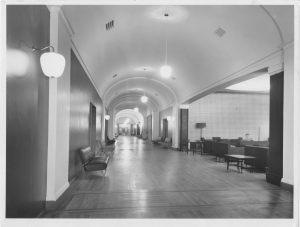
Photograph of the concourse lounge in the Portland Building; 1956; Copyright Marshall & Co. (Nottingham Ltd), Industrial photographers, Ford Street, Nottingham; UMP 1/10/6
In 2017 the central purpose of the building as a communal space with access to a range of services is still the prime concern, but unlike the 1950s planning process, award winning research into the needs of the Students’ Union and of current and future students has been at the heart of the redevelopment. Manuscripts and Special Collections will be collecting reactions to the work for the University archive, for future generations to discover.
Further reading:
Loan-able copies available in East Midlands Collection (local studies library):
- Nottingham: a history of Britain’s global university by John Beckett. Woodbridge: The Boydell Press, 2016
- Campus critique: the architecture of the University of Nottingham by A. Peter Fawcett and Neil Jackson. Nottingham: University of Nottingham, 1998
Reference only copies accessible for use in the Manuscripts and Special Collections’ Reading Room:
- The Gong, University of Nottingham Collection Periodicals
- The Gongster, University of Nottingham Collection Periodicals
- The Unfortunates by B.S. Johnson. London, 1969
Online:
A guide to the University archives and history of the University: http://nottingham.ac.uk/manuscriptsandspecialcollections/collectionsindepth/university/introduction.aspx
Find out more about our holdings and where to find us, on our website: http://nottingham.ac.uk/manuscriptsandspecialcollections/index.aspx
No comments yet, fill out a comment to be the first

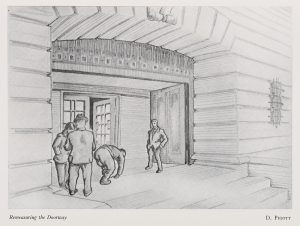
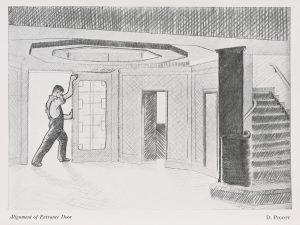
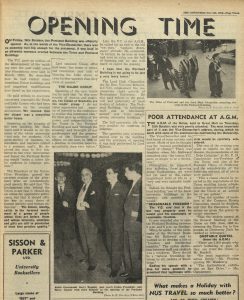
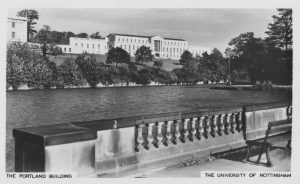
Leave a Reply